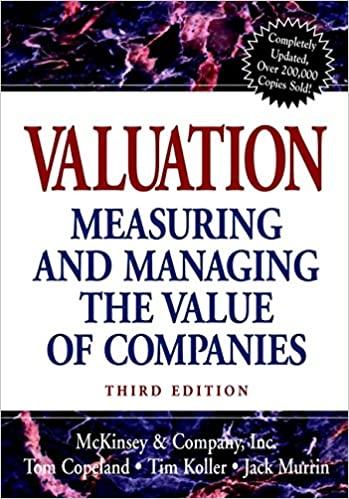Question
Business with gross receipts of $25 million or less may treat inventory as non incidental materials and supplies. Find Regulation Section 1.1623 and read paragraphs
Business with gross receipts of $25 million or less may treat inventory as non incidental materials and supplies. Find Regulation Section 1.1623 and read paragraphs (a)(1) and (a)(2) to help answer the following:
Frank owns an auto repair shop that serves a particular model of auto and so he tends to purchase parts in bulk. Frank is eligible to treat inventory as nonincidental materials and elects to do so. In December of 2019, he purchases 24 oil filters. He uses one to repair an auto in January 2020, and then about 2 per month and ends 2020 with 14 filters. Explain how Frank will treat his oil filter inventory.
1.162-3 Materials and supplies.
(a) In general -
(1) Non-incidental materials and supplies. Except as provided in paragraphs (d), (e), and (f) of this section, amounts paid to acquire or produce materials and supplies (as defined in paragraph (c) of this section) are deductible in the taxable year in which the materials and supplies are first used in the taxpayer's operations or are consumed in the taxpayer's operations.
(2) Incidental materials and supplies. Amounts paid to acquire or produce incidental materials and supplies (as defined in paragraph (c) of this section) that are carried on hand and for which no record of consumption is kept or of which physical inventories at the beginning and end of the taxable year are not taken, are deductible in the taxable year in which these amounts are paid, provided taxable income is clearly reflected.
(3) Use or consumption of rotable and temporary spare parts. Except as provided in paragraphs (d), (e), and (f) of this section, for purposes of paragraph (a)(1) of this section, rotable and temporary spare parts (defined under paragraph (c)(2) of this section) are first used in the taxpayer's operations or are consumed in the taxpayer's operations in the taxable year in which the taxpayer disposes of the parts.
(b) Coordination with other provisions of the Internal Revenue Code. Nothing in this section changes the treatment of any amount that is specifically provided for under any provision of the Internal Revenue Code (Code) or regulations other than section 162(a) or section 212 and the regulations under those sections. For example, see 1.263(a)-3, which requires taxpayers to capitalize amounts paid to improve tangible property and section 263A and the regulations under section 263A, which require taxpayers to capitalize the direct and allocable indirect costs, including the cost of materials and supplies, of property produced by the taxpayer and property acquired for resale. See also 1.471-1, which requires taxpayers to include in inventory certain materials and supplies.
Step by Step Solution
There are 3 Steps involved in it
Step: 1

Get Instant Access to Expert-Tailored Solutions
See step-by-step solutions with expert insights and AI powered tools for academic success
Step: 2

Step: 3

Ace Your Homework with AI
Get the answers you need in no time with our AI-driven, step-by-step assistance
Get Started


